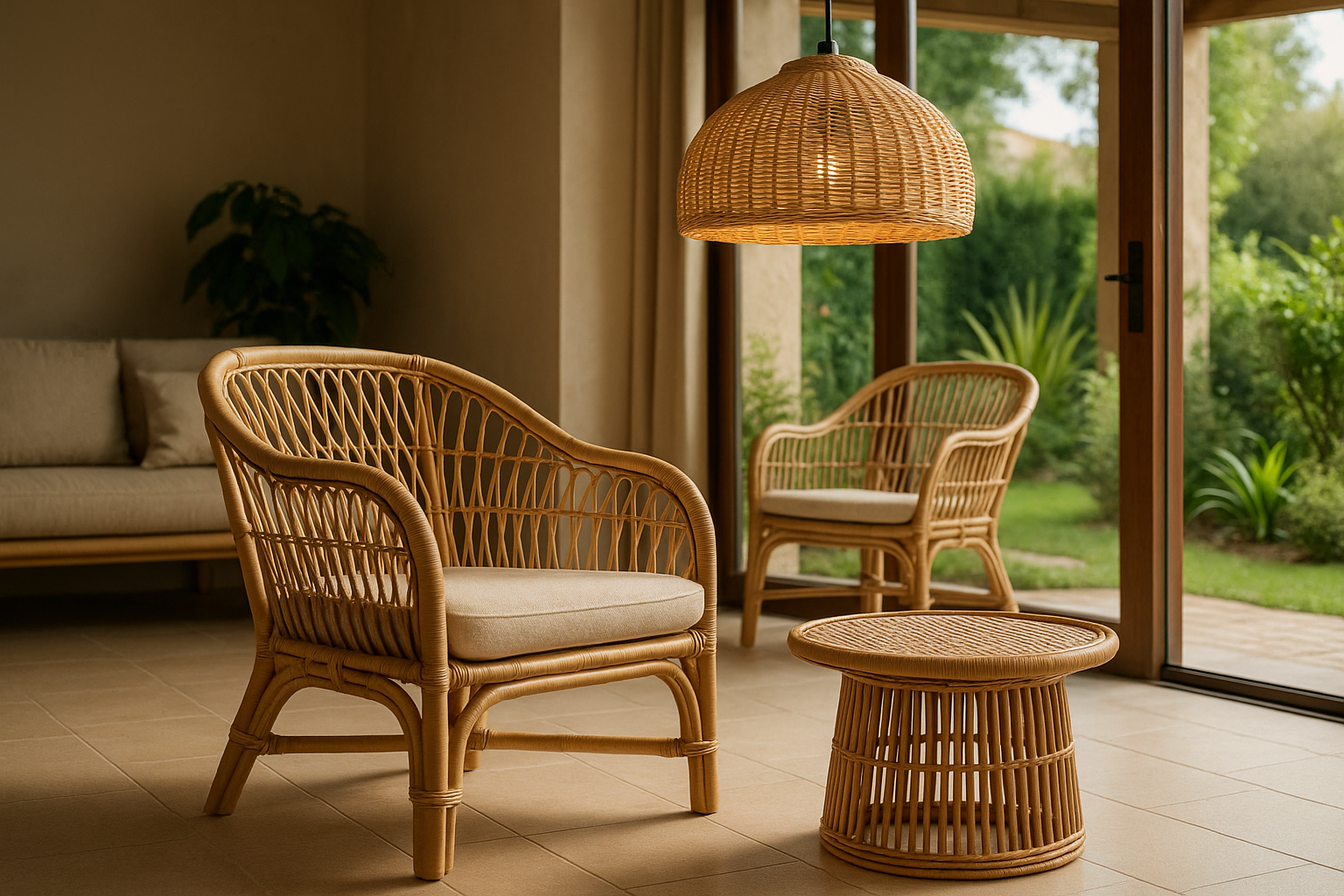The Renaissance of Rattan: A Timeless Twist on Home and Garden Design
The world of interior design is a stage, forever evolving with trends that come and go. Yet, amidst this transient atmosphere, certain elements have managed to stand the test of time—rattan furniture being one of them. This article delves into the enduring appeal of rattan, its historical relevance, and its modern-day applications, shedding light on why this humble material continues to win hearts across generations.

The Enduring Charm of Rattan: A Historical Perspective
The use of rattan in furniture design dates back to ancient civilizations. Known for its durability and flexibility, this material found favor with craftsmen across continents—from Asia to Europe to America. Its popularity soared in the 19th and 20th centuries, with rattan furniture becoming synonymous with luxury and style.
The Resurgence of Rattan: Current Design Trends
Fast-forward to the 21st century—rattan is experiencing a significant resurgence in popularity. Contemporary designers are increasingly incorporating rattan pieces into their work, giving this age-old material a modern twist. Whether it’s in the form of elegantly crafted chairs, chic coffee tables, or intricate light fixtures, rattan has made an indelible mark on the current design landscape.
The Practicality of Rattan: Market Trends and Daily Living
Apart from its aesthetic appeal, rattan furniture is also practical. It is lightweight, easy to maintain, and durable—traits that make it a favorite among homeowners. Market trends indicate a growing demand for rattan furniture, with a 2019 report by Grand View Research predicting the global rattan furniture market to reach $674.7 million by 2025.
Rattan in the Modern Home: Styling Techniques and Expert Insights
When it comes to styling with rattan, the possibilities are endless. Experts recommend mixing rattan pieces with different textures and colors for a layered, eclectic look. For those seeking a minimalist aesthetic, a single statement rattan piece can add warmth and interest to an otherwise neutral space.
A Sustainable Choice: The Eco-Friendly Appeal of Rattan
In an age where sustainability is paramount, rattan stands out as an eco-friendly choice. It is a fast-growing, renewable resource that requires minimal processing. Its use in furniture design contributes to forest preservation, making rattan not just a stylish choice, but an environmentally responsible one too.
In conclusion, the timelessness of rattan lies in its unique blend of history, versatility, practicality, and sustainability. As we move into an era that values both style and substance, rattan furniture seems poised to remain a cherished staple in home and garden design.





